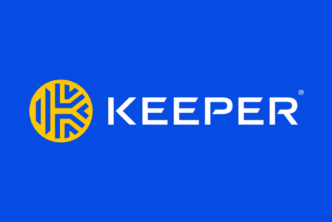
Sourcify is a YC-backed sourcing platform that matches customers with pre-vetted factories overseas. It helps enterprises worldwide improve manufacturing process and turnaround time by up to 64%. With a remote team of 16 people, 6 offices all over the world, and transparency at the forefront of everything the company does, Sourcify is creating the new streamlined sourcing experience.
In his interview with YouTeam CPO and Co-founder Yurij Riphyak, Founder of Sourcify, Nathan Resnick shares his recipe on successful remote collaboration experience. Keep reading to find out how to build a top-notch product while operating as a distributed or fully remote company.
Yurij: Remote or distributed teams are still a kind of taboo. Startups in Bay Area are going the extra mile trying to hire people in-house at any cost. So why did you decide to go a different way? What was the rationale behind going remote?
Nathan: It’s better access to talent and the ability to work around the world. We’ve got a team across Asia and now, with the development team that’s growing in Ukraine, it enables us to move faster, work more efficiently, and not spend as much time on engineering as most people do.
Yurij: Do you remember how you hired your first remote developer?
Nathan: It was on Upwork, actually. That was 2 years ago. It was through our lead developer’s past connections. He’s been working with this guy for a few years.
Yurij: Ok, what about your current team — how does it look like at the moment?
Nathan: We’ve got team members in Asia, mostly manufacturing – China, Vietnam, India. And also we’ve got operations, sales and marketing in San Diego, Las Vegas and Salt Lake City, Utah. In total, we’re about almost 16 now. We’ve got small offices around the world. There are 3 developers in Ukraine right now, and that’s all led through our lead developer in San Diego.
Yurij: So you have a CTO or team lead in San Diego, and they manage this distributed team across different time zones?
Nathan: Well, it’s just the development team in Ukraine, so that’s what they manage.
Yurij: Based on conversations with other founders, I kind of managed to isolate the biggest concerns against going remote, and I actually named them “seven deadly sins of remote”. Let’s briefly address each of them. The first is intellectual property theft – are you afraid of your IP being stolen by some dodgy Ukrainian guys?
Nathan: No, we haven’t got any contract where it’s obviously our IP. In the worst case, I fly over there and the money goes pretty far over there.
Yurij: How about communication? Do you feel any problems because of the language barrier?
Nathan: Not a bit. You’ve got to make sure that you have people that are bilingual. Then you have to make sure that they can come online. Our team members are fully integrated into our Slack, product stand-ups and everything. They’re fully a part of our team.

You have to make sure that your outsourced team is fully part of your existing team and works fluently just as your real team would work.
Yurij: Ok. Time zones. You have 10-hour difference between here and Ukraine. How do you manage that?
Nathan: Basically, just getting up early and staying up late, and then making sure that whatever needs to get done is addressed.
Yurij: Does the Ukrainian team also shift their business hours?
Nathan: A bit, but mostly I think it’s us.
Yurij: So what time do you wake up? How does your morning routine look like?
Nathan: Like 5-30 or 6 a.m. I wake up, drink some water, go to the gym, check my emails and Slack, etc.
Yurij: So you don’t start with grabbing your phone and looking through Slack and emails?
Nathan: Sometimes, but for the most part, it’s just a matter of open communication with the team and making sure that they have the tools that they need to succeed.
Yurij: Then the next one is the lack of employees’ motivation and loyalty. How do you know, for example, that your Ukrainian developers are only doing your project?
Nathan: I think the main reason is they don’t have time for doing anything else. They work a lot for us every week.
Yurij: How are you sure they’re performing on the right level?
Nathan: We look at the code, of course. And we have time tracking.
Yurij: What about the culture then? Actually, this is like the first thing that every founder mentions to me when he says, ‘no-no-no, remote is not for us’. You have to build the culture.
Nathan: The culture has to be spread across countries, like China, Vietnam, etc. I think it’s a challenge. It’s definitely more challenging than doing it in-house. But I think it’s possible if you create the same dynamic in your office that you would do anywhere in the world.
Yurij: Culture is an interesting thing because some companies like Netflix have a really elaborate culture code – but do you have something like that, some elements of culture that you want to make sure your remote developers and salespeople share?
Nathan: For the most part, as an organization, we focus on transparency, action orientation, and results.
Yurij: How do you do that? Do you have a special meeting with a new employee that you onboard telling them about it?
Nathan: Sometimes I think we definitely do tell them at first meeting that transparent is how we’re operating.
Yurij: Some companies do these quarterly meetings to maintain the human link and to make people actually meet face to face. Do you do something like that?
Nathan: Yeah, we meet the team from over there like almost once a month. A lead developer goes over there like every quarter or so, to see what’s going on.
Yurij: Those remote employees – do they work from home or do they work from the office?
Nathan: Most of them work from home, but it depends on where they are. We’ve got small offices around the world.
Yurij: Do you feel that there’s any problem with distractions associated with working from home? Does any of your employees have a problem like that?
Nathan: It’s a good question. I don’t think we do right now, but definitely, we’d be open to trying to find a way to solve that in the future.
Yurij: Ok, let’s talk a little about the onboarding of new employees. When you hired your recent remote developer – what did the onboarding process look like?
Nathan: Number one is getting them into all of our systems. Next is getting them into our code base, making them comfortable with what we’re doing – and then we ramp it up pretty fast.
Yurij: So you like throw them into the water?
Nathan: Yes. Hope they swim?
Yurij: What if they don’t?
Nathan: Then we’ll give them some life jackets and stuff.
Yurij: You’ve mentioned Slack. What other tools do you use?
Nathan: Slack, Hubspot, Google Meetings, Zoom, Hangouts.
Yurij: How do you measure the performance? How do you know they are good or bad? I know we addressed this briefly but let’s go a little bit deeper.
Nathan: For developers, it’s just the amount of time on the product they build – each two-week sprint they have to be rolling out different products. We have continuous releases, and they’re just constant. We’re pretty excited about that, it gets the product really flowing.
Yurij: Do you feel any difference between working with developers and working with business-oriented jobs like sales or customer support?
Nathan: Yeah, definitely. These include different management styles, different team members who’re gonna act differently depending on their roles. My management approach is always depending on who I am managing.
Yurij: Let’s say you sell Sourcify in one year or two. Did you already think what you’re going to do next?
Nathan: I don’t know if I want to sell it, I have to run this company my whole life to be happy.
Yurij: So you feel that this can be a lifetime business? Do you plan, as you grow bigger, to adhere to this remote hiring strategy?
Nathan: Yeah, we have to believe that we shouldn’t restrict talent to one location, so we have small offices and small teams around the world.
Yurij: One piece of advice you would give a founder who is starting hiring and hesitating between in-house and remote?
Nathan: I would say – try remote if you can manage it, and then see how far that gets. If it comes too hard for you to manage, then hire someone in-house to manage it. I mean, remote can work if you have the time to manage it and make it happen.
This interview is just a tiny part of our huge project – a series of founder stories shared by YouTeam. Enjoy your reading and keep coming back for more opinions from the world’s most successful tech founders!





